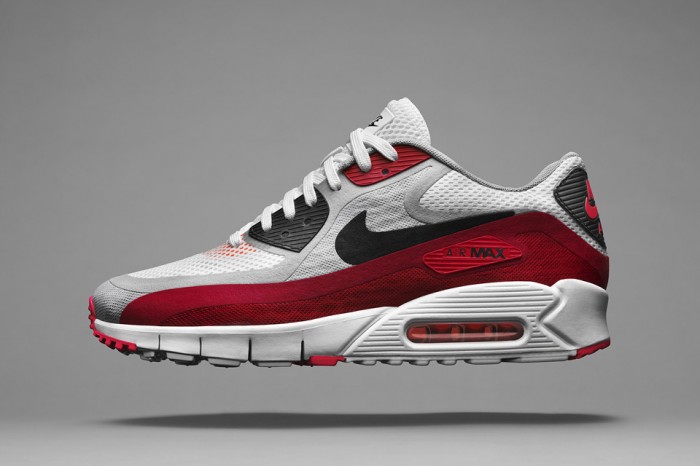As a Sneakerologist, the question I get asked most often is “Where are we in the Sneaker Cycle? When is this sneaker cycle going to end?”
And my answer is, “It’s not going to end. We are in a permanent state of Sneaker-ness”.
Let examine several factors that support my thesis:
Sales History
I’ve been archiving data fromwww.sportsonesource.com since 2004. This is the topline growth for the sneaker industry for each year since 2003.
|
2004 |
2005 |
2006 |
2007 |
2008 |
2009 |
2010 |
2011 |
2013 | |
| ALL |
1% |
10% |
0% |
3% |
0% |
3% |
9% |
1% |
5% |
The industry has been running at a mid-single digit CAGR since 2004. The best year was +10% and the worst, flat. While categories have ebbed and flowed, this chart really illustrates that we’ve been on a long run of growth for athletic footwear. I do not expect this trend to reverse any time soon.
When you look below the top line, there has been tremendous volatility by category but the topline rate has not faltered. We’ve had Basketball down and then up, Casual up and down and of course the Toning run up and meltdown. But through it all, consumers have continued to buy more and more athletic shoes every year.
So while I expect turmoil on the category level (Basketball up, Running cresting, Casual recovering, and Walking taking off) I don’t believe the general trajectory of the business changes. The success of brands and retailers will depend on their ability to navigate the changes below the topline.
Segmentation
The last time the sneaker industry had a meltdown was in the mid 90’s. The Gap ran an ad campaign that said “Everybody in Khakis!” and the sneaker business cratered. (Yes—the Gap had that kind of authority then. No retailer has that mind share today).
But the real culprit in the mid 90’s was lack of segmentation. Brands essentially made the same shoes for every retailer. Every retailer wanted to look like Footlocker back then, creating far too much duplication of products and brands. When the soft patch occurred, the cars in the freight train piled up behind.
Today, brands (and retailers) understand their roles. Channels and markets are clearly defined, avoiding duplication and redundancy. If the industry were to hit a soft patch or lull, there are guard rails in place to avoid catastrophe.
Denim
My recent visit to the Las Vegas trade shows confirmed (again) that denim rules as fashion choice for bottoms. While we certainly have seen some turmoil around which denim brands are most popular, the look has remained important.
Sneakers are the perfect accompaniment to jeans. As long as we are in a strong denim period, sneakers will remain strong as well.
Demographics
We now have at least three generations of kids who grew up wearing nothing but sneakers (at least until they reached the workforce).
It will be very difficult to convince millennials to give up light weight and comfortable athletic footwear for heavy and stiff conventional shoes.
Casualization
Most companies moved very quickly from “Casual Friday” to “Casual Every Day”. Across the workplace landscape, the rules about appropriate business attire have relaxed.
When I first started my business, client meetings required a necktie; 5 years ago, I wore dress shirt and slacks; now I take my meetings in jeans.
Athletic fashion
There is no doubt that right now the fashion spinner is focused on athletic apparel. We are seeing more athletic apparel worn as streetwear. According to SportsOneSource, the Capri/Tights business is off the chart, as is the Hoodie business. The popularity of Athletic apparel has had a profound negative effect on the rest of teen retail.
As long as athletic apparel as street wear remains popular, the sneaker business will remain strong.
Product Pipeline
Retailers report to me that the product pipeline for new sneaker styles and technologies remains robust.
New Styles, new silhouettes, new materials, as well as new manufacturing techniques abound, all of which will contribute to the sneaker business growing rapidly.
Internet
Today’s sneaker aficionado has remarkable access to what’s new and next in sneaker fashion. My 11,000 Twitter followers are constantly asking me about new releases, some of which I’ve never heard of.
The Internet will continue to fuel high levels of interest in new products. This will keep interest and energy around the sneaker business.
Unrequited demand
The brands (particularly the Jordan brand) have done a great job of making sure the most desirable shoes are kept in limited supply, often selling out in hours, if not minutes.
This unrequited demand keeps the interest and desire for the next product high, perpetuating strong growth.
Conclusion
I believe all these factors taken together show that the strong demand for sneakers will not abate. We can expect this “cycle” to continue for some time to come.

